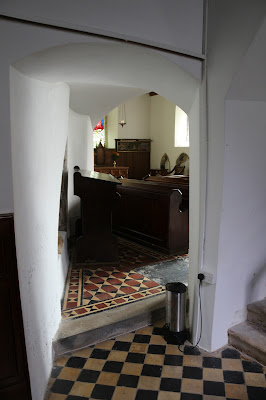| Mrs P's family history tells us that, around 1789, her 3x-great grandfather, Abraham/Abram Garrett was born in Lawrenny, Pembrokeshire. He, and his family, would have been very familiar with St Caradog's church and, although we've yet to confirm it, might have been baptised, married and buried here. Abraham was one of the many people tempted out of West Wales to work in the iron works near Blaina and Ebbw Vale and that's where the family line continues. Abraham swapped rural tranquility for the smoke-filled business of the valleys. What a contrast. |














No comments:
Post a Comment